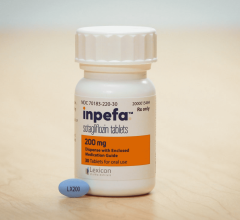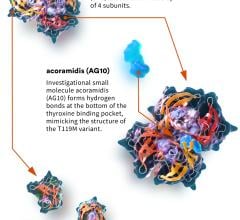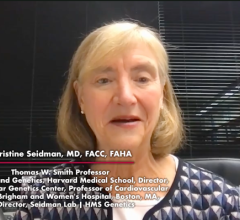
May 6, 2015 — People with acute coronary syndrome (ACS) who undergo an angioplasty procedure and receive a heart stent are prescribed an oral antiplatelet (OAP) therapy and aspirin to help prevent a heart attack, a blood clot in their heart stent (stent thrombosis), or even death.[3]
A recent survey conducted by Harris Poll found that 52 percent of 275 acute coronary syndrome (ACS) patients currently taking an OAP have missed taking or changed the way they take their prescribed OAP therapy. This revelation comes even though most of them were informed by their doctors of the importance of the therapy to their heart health.[4] Of these respondents, those under age 65 (194 participants) were much more likely not to follow their OAP therapy regimen as prescribed than older respondents, even though they were more concerned about their health, according to the survey findings.[4]
To address this critical issue, the Preventive Cardiovascular Nurses Association (PCNA), Society for Cardiovascular Angiography and Interventions (SCAI) and Mended Hearts, with support from Daiichi Sankyo Inc. and Eli Lilly and Company (NYSE: LLY), urge healthcare professionals to increase their efforts to help ACS patients stick to their prescribed OAP therapy following an angioplasty or cardiac stent procedure. As the survey found, 12 percent of the total survey respondents said they do not recall being informed by their healthcare professionals that they faced serious health risks if they did not adhere to their OAP therapy.[4]
"For people who have recently received a heart stent for ACS, changing, skipping or discontinuing OAP therapy increases the risk of serious heart problems or even death," said Jeffrey Cavendish, M.D., FSCAI, FACC, lead interventional cardiologist for Kaiser Permanente San Diego and director of the cardiac catheterization laboratory at the Scripps Prebys Cardiovascular Institute in La Jolla, California.
To help ACS patients prevent recurrent heart events after an angioplasty procedure, SCAI, PCNA and Mended Hearts are introducing the "After the Stent: Follow Your Action Plan" campaign. The campaign aims to mobilize cardiovascular healthcare professionals to improve ACS patients' knowledge and practices related to OAP adherence.
Annually, about 610,000 people with ACS, which includes heart attack and a type of chest pain called unstable angina (UA), undergo an angioplasty procedure to open a blocked coronary artery.[5][6][7] Clinical research shows that up to 16 percent of these patients stop taking their prescribed OAP therapy in the first 30 days,[1][8] which leaves them more vulnerable to another heart event and increases by 10-fold their risk of death at one year.[1]
"Patients may stop taking their OAP medication for a variety of reasons, such as mistakenly believing their heart condition is 'fixed' or not understanding why or how long they need to take the medication," said Lola Coke, Ph.D., ACNS-BC, RN-BC, FAHA, FPCNA, associate professor of nursing and cardiovascular clinical nurse specialist at Rush University Medical Center in Chicago, and member of the board of directors of PCNA. "Identifying and correcting these misunderstandings is a first step healthcare professionals can take to ensure medication adherence. Healthcare professionals need to make sure that ACS patients and caregivers have the right information and support to follow their medication regimens."
To launch the campaign, PCNA and SCAI published a position paper that demonstrates the need for increased attention to OAP medication and highlights practical, research-based solutions to address nonadherence through education, mobilization, personalization and teamwork.
Additionally, the groups have developed an OAP nonadherence risk assessment for healthcare professionals to use with their patients. The assessment includes the eight-question Morisky Medication Adherence Screener, widely used in other disease categories to assess medication adherence[9][10][11][12], six questions specific to ACS patients who have undergone an angioplasty procedure, and a Conversation Guide to help healthcare professionals tailor conversations with individual patients based on the risk factors identified in the assessment questionnaires.
Survey Reveals Education and Support Gap, Particularly for Younger Patients 4
The survey also found that of the 296 respondents who visited a healthcare professional within the 12 months following their angioplasty procedure, 20 percent said they had questions about their prescribed OAP medication that were not addressed by their healthcare team. Most likely to have questions were those under age 65 (209 participants). Additionally, those under age 65 were less aware than those 65 years or older that not taking their OAP medication as prescribed could lead to future cardiac events (74 percent vs 88 percent of total respondents respectively)*. Moreover, only 54 percent of the total respondents overall said they remember being asked during a follow-up visit with their physician if they filled their OAP medication prescription.
"Coping with a heart event is an overwhelming experience for patients and their families, which makes it especially important that healthcare professionals take the time to explain what occurred and what needs to happen after the angioplasty procedure to help prevent another heart event," said Donnette Smith, executive vice president of Mended Hearts. "It is also equally important that patients and caregivers ask their healthcare team questions if they have concerns or are not clear why or how they should follow their new medication regimen. There are excellent support programs and tools available to help patients to successfully manage their OAP medication routine. We encourage ACS patients and caregivers to ask for help and support resources."
For more information: www.pcna.net, www.scai.org
[1] Spertus JA, Kettelkamp R, Vance C, et al. Prevalence, predictors, and outcomes of premature discontinuation of thienopyridine therapy after drug-eluting stent placement: results from the PREMIER registry. Circulation. 2006;113:2803–2809.
[2] Rothberg MB, Sivalingam SK, Ashraf J, et al. Patients' and Cardiologists' Perceptions of the Benefits of Percutaneous Coronary Intervention for Stable Coronary Disease. Ann Intern Med. 2010;153:307-313.
[3] Levine GN, Bates ER, Blankenship JC, et al. 2011 ACCF/AHA/SCAI Guideline for Percutaneous Coronary Intervention: Executive Summary: A Report of the American College of Cardiology Foundation/American Heart Association Task Force on Practice Guidelines and the Society for Cardiovascular Angiography and Interventions. Circulation. 2011;124:2574-2609.
[4]Study conducted online by Harris Poll on behalf of Daiichi Sankyo, Inc. and Eli Lilly and Company from February 13 – April 10, 2014 among 305 respondents in the US. Qualifying respondents were between the ages of 35-74, had an angioplasty procedure in the previous 12 months and were prescribed oral antiplatelet therapy.
[5] Go AS, Mozaffarian D, Roger VL, et al. for the American Heart Association Statistics Committee and Stroke Statistics Subcommittee. Heart disease and stroke statistics – 2014 update. Circulation. Published online December 18, 2013.
[6] Gibson CM, Pride YB, Frederick PD, et al. Trends in Reperfusion Strategies, Door-to-Needle and Door-to-Balloon Times, and In-Hospital Mortality Among Patients with ST-Segment Elevation Myocardial Infarction Enrolled in the National Registry of Myocardial Infarction from 1990 to 2006. American Heart Journal. 2008;156:1035-44.
[7] Roe MT, Chen AY, Cannon CP, et al. Temporal Changes in the Use of Drug-Eluting Stents for Patients with Non–ST-Segment–Elevation Myocardial Infarction Undergoing Percutaneous Coronary Intervention from 2006 to 2008. Circulation: Cardiovascular Quality Outcomes. 2009;2:414-420.
[8] Quadros A, Welter D, Camozzatto F. Identifying Patients at Risk for Premature Discontinuation of Thienopyridine After Coronary Stent Implantation. American Journal of Cardiology 2011;107(5):685-9.
[9] Morisky DE, Ang A, Krousel-Wood M, Ward H. Predictive Validity of a Medication Adherence Measure for Hypertension Control. Journal of Clinical Hypertension. 2008;10(5):348-354.
[10] Trindade AJ, Ehrlich A, Kornbluth A, Ullman T. Are Your Patients Taking Their Medicine? Validation of a New Adherence Scale in Patients with Inflammatory Bowel Disease and Comparison with Physician Perception of Adherence. Inflamm Bowel Dis. 2011;17:599-604.
[11] Reynolds K, Viswanathan HN, O'Malley CD, et al. Psychometric Properties of the Osteoporosis-Specific Morisky Medication Adherence Scale in Postmenopausal Women with Osteoporosis Newly Treated with Bisphosphonate. Ann Pharmacother. May 2012;46(5):659-670.
[12] Krousel-Wood MA, Islam T, Webber LS, Re RS, Morisky DE, Muntner P. New Medication Adherence Scale Versus Pharmacy Fill Rates in Seniors with Hypertension. Am J Manag Care. 2009;15(1):59-66.
[13] Fox KAA, Steg PG, Eagle KA, et al. Decline in rates of death and heart failure in acute coronary syndromes, 1999-2006. J Am Med Assoc. 2007;297:1892-1900.
[14] Chan MY, Mahaffey KW, Sun LJ, et al. Prevalence, predictors, and impact of conservative medical management for patients with non-ST-segment elevation acute coronary syndromes who have angiographically documented significant coronary disease. J Am Coll Cardiol. 2008;1:369-378.
[15] Kolansky DM. Acute coronary syndromes: Morbidity, mortality and pharmacoeconomic burden. Am J Manag Care. 2009;15:S36-S41.


 July 10, 2024
July 10, 2024 








